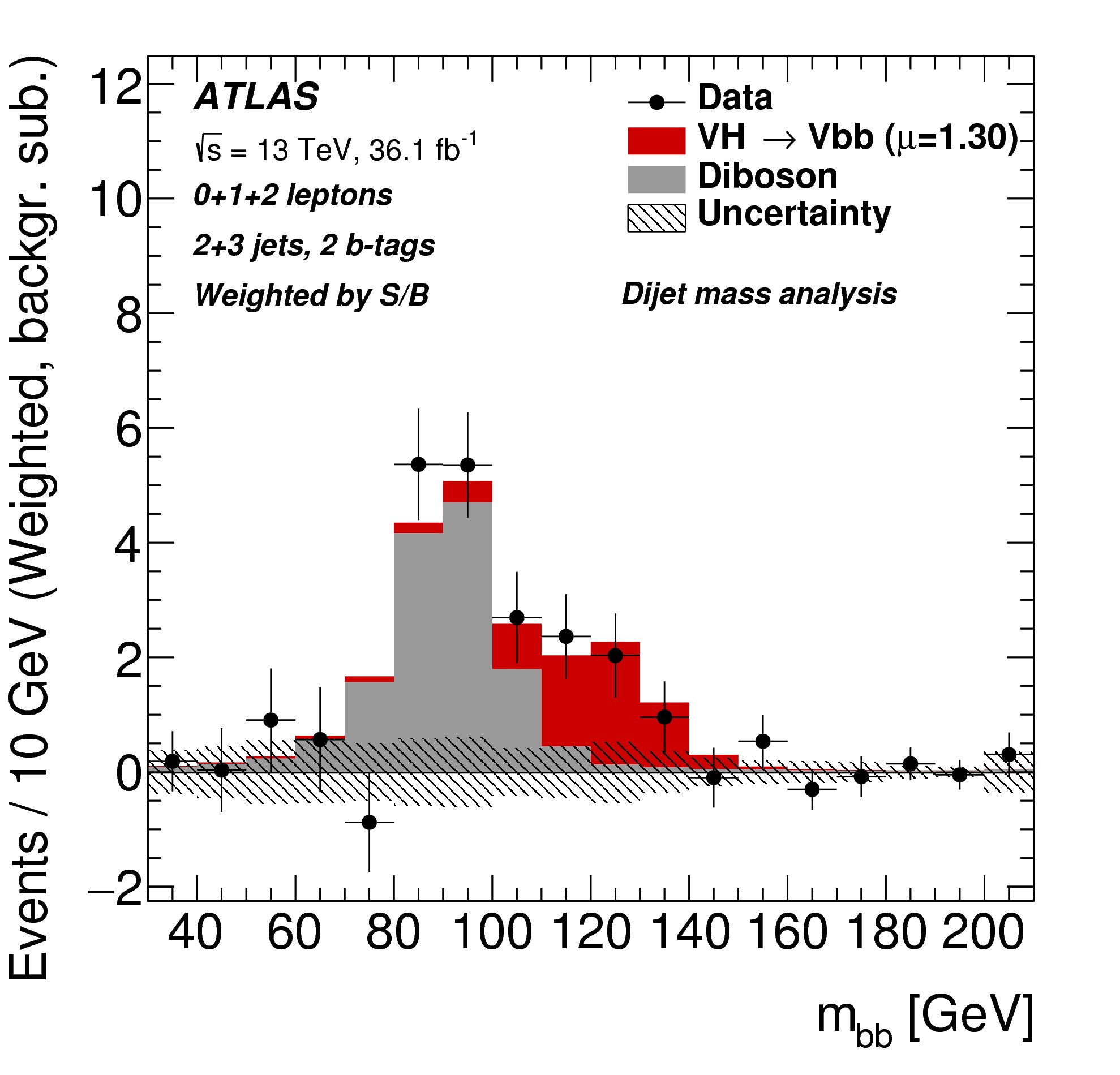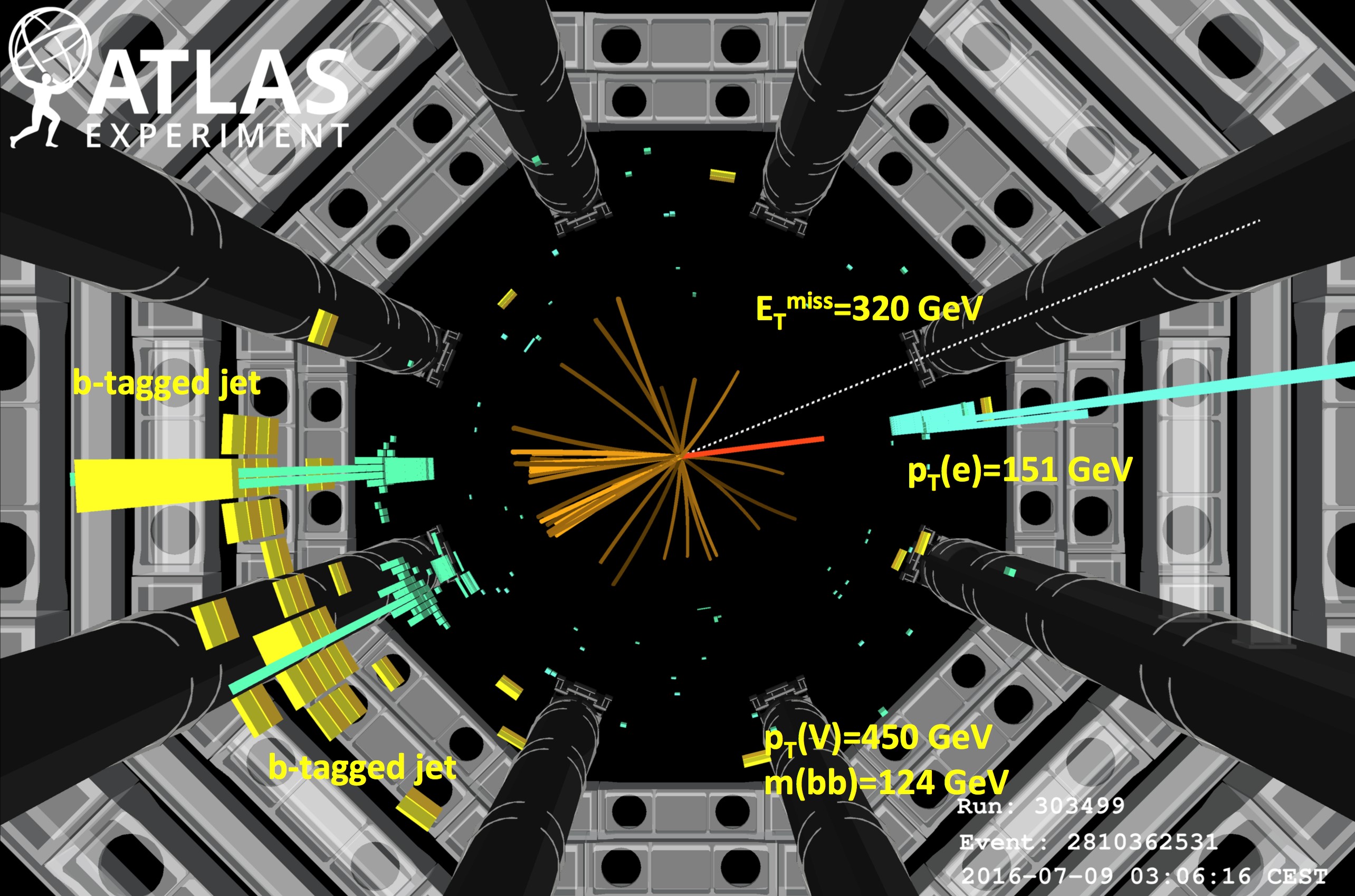Evidence for Higgs decays to bb at ATLAS Experiment
The Higgs boson was discovered in 2012 by the ATLAS and CMS experiments, in the gauge boson decay channels. Although according to the Standard Model (SM) Higgs decaying into a pair of b-quarks (H→bb) has the largest predicted decay branching fraction (BR~58%), this channel has not yet been observed at the LHC due to difficulty in detecting this decay mode at a hadron collider. It is important to search for such decay channel as its observation will further strengthen the mass generation mechanism predicted in the SM. If the detected H→bb decay rate differs significantly from the SM prediction, this could indicate a sign of new physics. The high energy physics group from Academia Sinica previously searched for the Higgs boson in this decay channel in the CDF experiment, at Tevatron, and it is now contributing to this search in the ATLAS experiment.
Evidence of observing such decay mode was announced by ATLAS in July 2017, in the search channel where the Higgs boson is produced in association with a W or Z boson, and with these gauge bosons decay into leptons (electrons, muons and neutrinos). These decayed leptons provide the means to trigger the signal efficiently and to reject the background. To detect the H→bb decay in this search, several properties of the signal are exploited to separate the signal from the background. For example the long lifetime of the b hadrons in the jets of the b quark from the Higgs decay, and the invariant mass resonance form by the two-b-jet system (see Figure 1). By analyzing the data sample collected with the ATLAS detector in 2015 and 2016, the first two years of LHC Run2 data taking, ATLAS found evidence for the H→bb decay at the significance level of 3.5 σ. This evidence is increased to 3.6 σ when combined with the ATLAS Run1 search results. A paper of these results has been submitted to the JHEP journal (arXiv:1708.03299).

Figure 1 : Mass distribution of the two-b-jet system. The predicted background contributions, except the diboson WZ and ZZ, have been subtracted from the data. The grey histogram is the predicted WZ and ZZ contributions with one of the Z decays in Zbb. The red histogram is the measured VH signal (V=W or Z).
These significant results are the outcome from the dedicated work of many physicists in the ATLAS Hbb working group, the great support from the ATLAS collaboration, and the fantastic performance of the LHC machine. Academia Sinica (AS) joined the ATLAS Hbb group in 2011 and made significant contributions to the neutrino decay channel (ZH→ννbb) that is characterized by large missing transverse energy. This channel is one of the three analyses channels employed in this evidence results. The AS group has continuously been an active participant in this search. Song-Ming Wang, leader of the AS-ATLAS team, had served as a co-convener of the ATLAS Hbb group in 2015-2016. He made the first public presentation of this evidence results on behalf of the ATLAS collaboration at the European Physical Society conference in Venice, Italy, on July 6th 2017. The other members of the AS-ATLAS team that participated in this search are Adrian Buzatu and Wei Wang. They have contributed to the improvement of the resolution of the measured two b-jet-system mass, and the measurement of the performance of the trigger that is used to collect the data sample for the neutrino decay channel.

Figure 2 : Event display of one of the selected VH signal candidate data event with H→bb.
Links to news and results of this analysis :
- http://press.cern/update/2017/07/lhc-experiments-delve-deeper-precision
- http://atlas.cern/updates/atlas-news/atlas-highlights-eps-hep-2017
- https://atlas.cern/updates/physics-briefing/first-lhc-sighting-higgs-boson-its-favourite-decay
- https://atlas.web.cern.ch/Atlas/GROUPS/PHYSICS/PAPERS/HIGG-2016-29/
